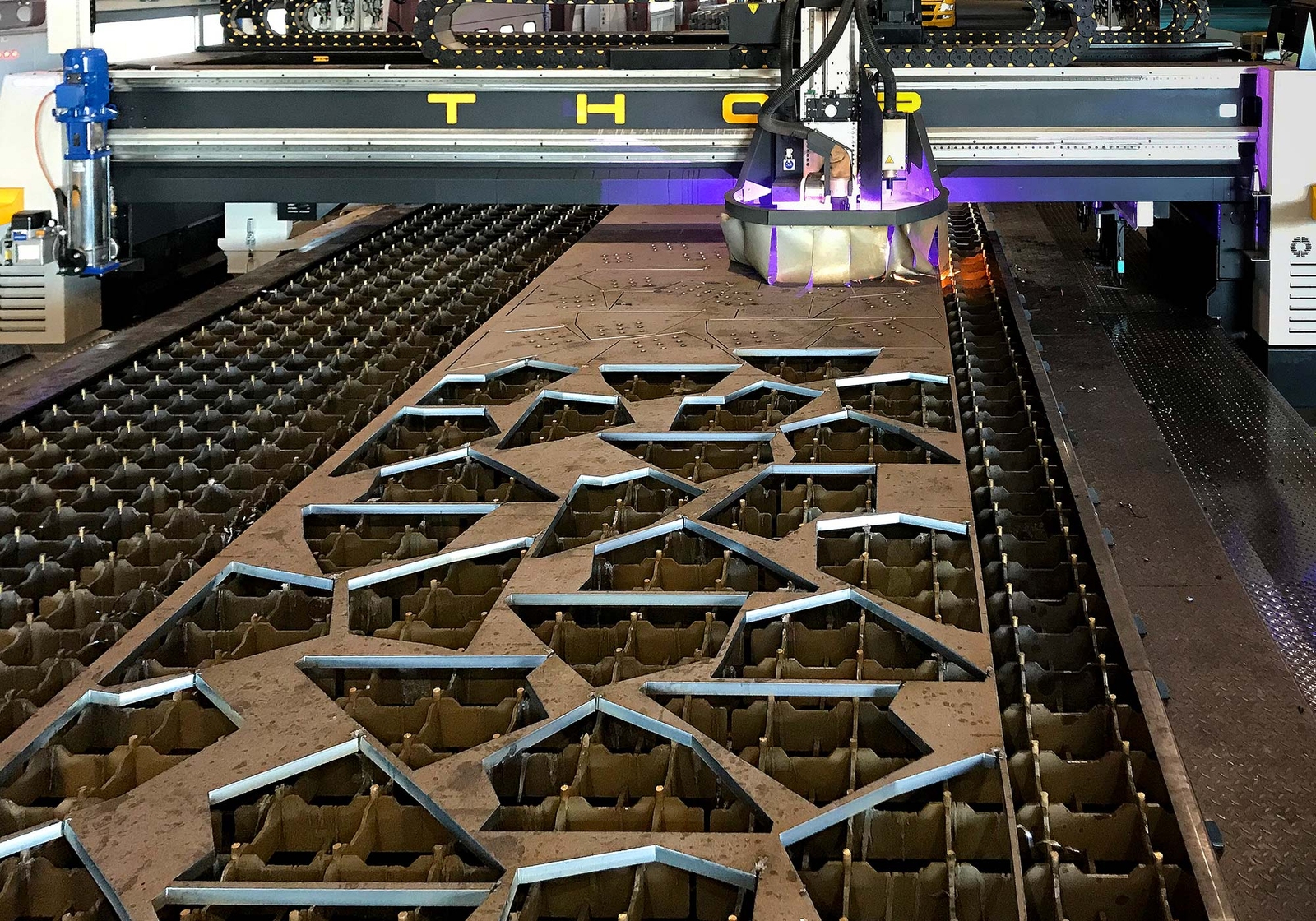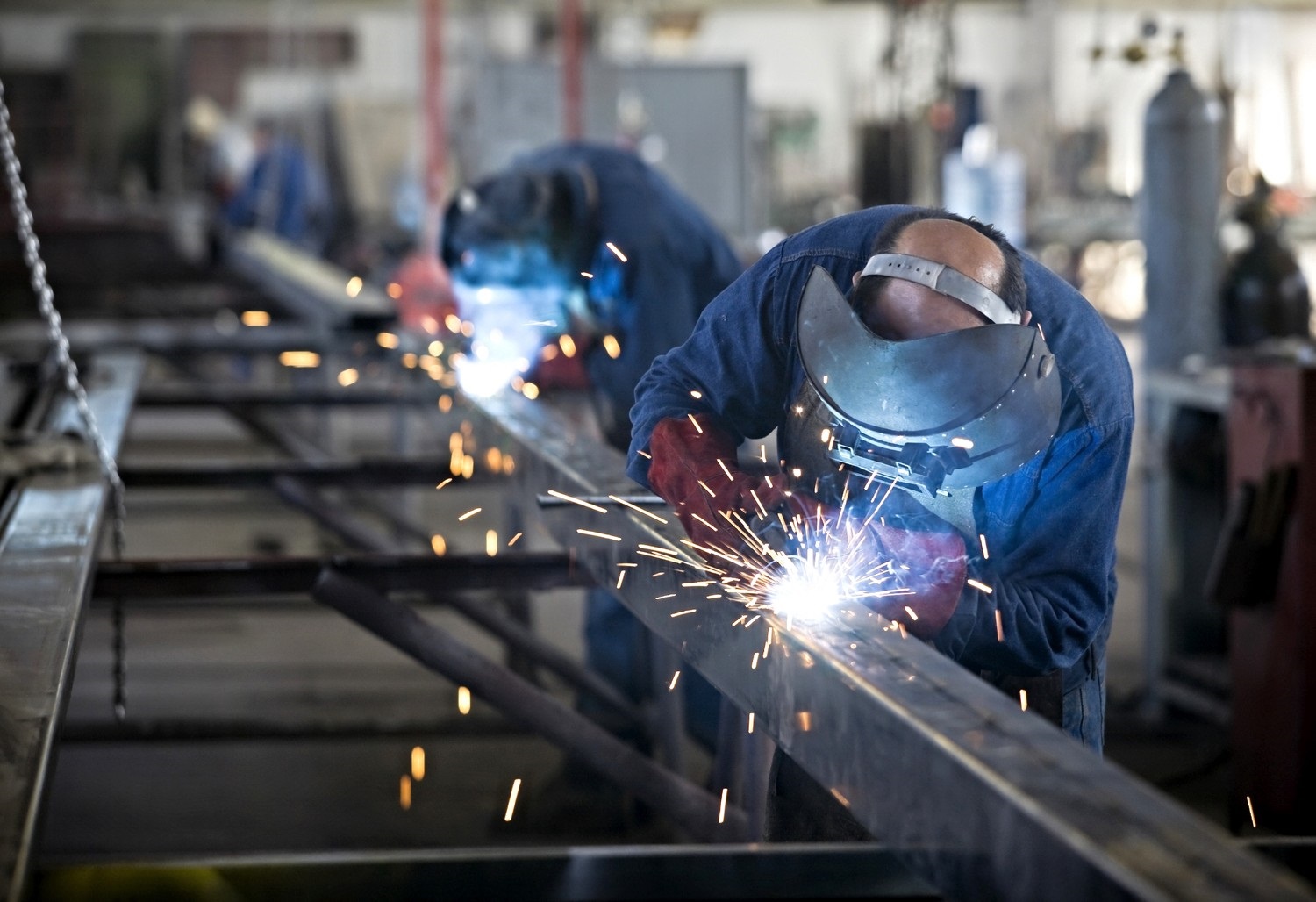Metal Fabrication Melbourne: Accuracy Design for All Demands
Wiki Article
Comprehensive Evaluation of Cutting-Edge Techniques in Steel Construction Sector
As the steel construction market proceeds to advance, the combination of sophisticated techniques has ended up being crucial for staying competitive and meeting the demands of modern-day manufacturing requirements. In this dynamic sector where technology plays a critical function, understanding the nuances of these innovative strategies is not simply an option but a need for those looking to forge ahead in the ever-evolving world of steel construction.Laser Reducing Advancements
In the realm of steel fabrication, laser cutting improvements have actually reinvented the accuracy and efficiency of metal shaping processes. By utilizing the power of concentrated laser beams, producers can currently attain unparalleled levels of precision when cutting through different sorts of steels. This modern technology makes it possible for detailed styles to be performed with very little material wastage, making it an affordable service for markets needing high precision parts.Among the vital benefits of laser cutting is its ability to handle a vast array of materials, including stainless-steel, light weight aluminum, and carbon steel, effortlessly. The process produces tidy, burr-free edges, eliminating the demand for extra finishing actions. The non-contact nature of laser reducing reduces the threat of material contamination, resulting in greater high quality end items.
Additionally, laser reducing devices can be set to make swift, specific cuts, substantially decreasing production time contrasted to standard reducing methods. This rate and accuracy make laser reducing particularly ideal for automation settings where efficiency is extremely important. As innovation remains to development, laser cutting is poised to play a progressively essential function in the steel manufacture market.

CNC Machining Innovations
The evolution of CNC machining innovations has introduced a brand-new age of accuracy and efficiency in the steel construction sector. Computer System Numerical Control (CNC) equipments have reinvented steel fabrication by using unparalleled accuracy and repeatability in the manufacturing procedure. Alpha reo. Among the crucial technologies in CNC machining is the integration of advanced software systems that enable real-time tracking and adjustments, resulting in improved efficiency and quality assuranceMoreover, the advancement of multi-axis CNC devices has enabled for the construction of complicated steel elements with complex designs that were previously challenging to produce. These makers can do a wide range of machining operations, consisting of milling, drilling, turning, and grinding, all with high levels of accuracy.
Moreover, the unification of automation and robotics in CNC machining has structured production processes, reduced lead times, and minimized the margin of error. This integration of cutting-edge technologies not only boosts efficiency but also ensures consistent top quality throughout all made steel components. Finally, CNC machining advancements proceed to drive developments in the steel manufacture sector, establishing new standards for precision and performance.
Automated Welding Technologies
Automated welding modern technologies have actually reinvented the steel construction industry, boosting performance and accuracy in the welding process. These cutting-edge modern technologies use computer-controlled systems to automate the welding process, resulting in greater productivity levels and improved weld top quality. One of the key benefits of automated welding is the capacity to carry out complicated welds with consistent accuracy, reducing the possibility of errors and revamp.Robotic welding systems go to the leading edge of automated welding technologies, using unrivaled rate and precision. These systems can manage a wide variety of welding jobs, from basic to elaborate, with convenience (steel fixing). By utilizing sophisticated sensing units and software, robot welders can adapt to variants in material and joint geometry, making certain an uniform and trusted weld
Moreover, automated welding modern technologies improve work environment security by lessening the direct exposure of human welders to dangerous fumes and extreme warmth. As the steel fabrication industry remains to advance, incorporating automated welding technologies will be vital for business aiming to remain affordable and fulfill the growing needs for high-grade welded products.
Robotics Integration in Construction
Using robot systems in manufacture procedures has actually come to be a pivotal strategy for enhancing efficiency and precision in modern-day production environments. Robotics integration in steel construction uses a myriad of advantages, consisting of boosted efficiency, enhanced quality control, and enhanced precaution. These advanced robot systems are outfitted with sophisticated sensors and programming capacities, enabling them to carry out elaborate tasks with a high level of precision and repeatability.One of the key benefits of robotics combination in steel fabrication is the capability to automate repeated tasks, such as material handling, reducing, welding, and assembly processes. This not only quickens production cycles but also lowers the threat of human mistake, resulting in higher total item top quality. Additionally, robotics can operate 24/7, considerably enhancing manufacturing outcome and meeting tight project deadlines.

3D Printing in Steel Production
Having revolutionized the steel construction sector via robotics combination, the burgeoning expedition of 3D printing in steel manufacturing is positioned to further advance the realm of contemporary production techniques. 3D printing, also called additive production, supplies unprecedented style flexibility and intricacy, More Help making it possible for the production of detailed steel structures that were formerly unattainable through conventional manufacturing techniques. By utilizing computer-aided layout (CAD) software program, suppliers can precisely manage the layer-by-layer deposition of steel product, resulting in parts with improved capabilities and geometries.One of the crucial advantages of 3D printing in steel manufacturing is its capability to decrease product waste considerably. Unlike subtractive manufacturing processes where excess material is trimmed away, 3D printing just makes use of the essential quantity of steel needed for the last component. This efficiency not only leads to cost savings but also aligns with sustainable manufacturing practices by reducing environmental impact.
Furthermore, 3D printing enables rapid prototyping and customization, allowing for the production of small sets of complicated steel components with brief preparations. As the innovation remains to develop and become much more accessible, its combination into mainstream steel construction processes is expected to drive innovation and performance throughout the industry.
Conclusion
Finally, the steel construction sector has actually seen significant improvements in strategies such as laser cutting, CNC machining, automated welding, robotics integration, and 3D printing. These innovative technologies have reinvented the method steel items are produced, causing raised performance, accuracy, and cost-effectiveness. Continued investment in these innovative techniques is essential for the industry to stay affordable and fulfill the needs of contemporary manufacturing processes.As the steel fabrication sector proceeds to progress, the combination of advanced techniques has actually ended up being vital basics for staying competitive and satisfying the demands of modern-day production standards.One of the vital benefits of laser cutting is its capacity to deal with a large array of materials, including stainless steel, light weight aluminum, and carbon steel, with convenience.Automated welding modern technologies have actually reinvented the steel construction industry, boosting performance and accuracy in the welding process.Having revolutionized the steel manufacture sector with robotics integration, the expanding expedition of special info 3D printing in steel manufacturing is positioned to more development the realm of modern-day manufacturing strategies.In final thought, the steel manufacture market has actually seen considerable advancements in methods such as laser cutting, CNC machining, automated welding, robotics assimilation, and 3D printing.
Report this wiki page